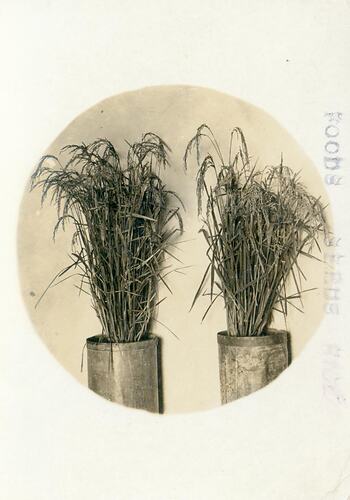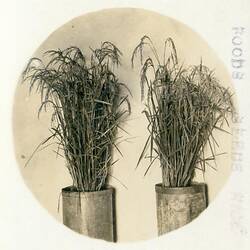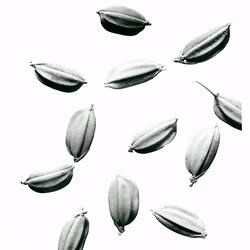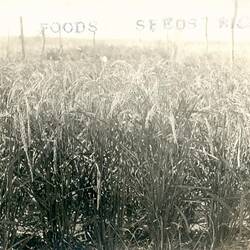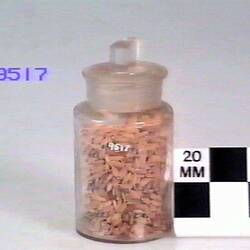Summary
Takasuka rice was the first rice ever to be grown in Australia, by a Japanese man of the name, Jo (Isaburo) Takasuka.
Jo Takasuka
Jo Takasuka was born on 13 February 1865 in Matsuyama, Ehime Prefecture, Japan. Educated in Japan and America, he was elected as a member of the House of the Representatives in Japan in 1898, and he served as a Member of Parliament for five years.
In 1905 with his wife, Ichiko, and two small children, Sho and Aiko, he migrated to Australia, arriving in Melbourne on the ship "S.S. Empire" on 15 March. Soon after his arrival, he set up a trading company called "Takasuka, Dight and Company" at 136 Queen Street. He also taught Japanese at Stotts' and Hoare Business College, being the first Japanese to teach Japanese in a classroom situation in Australia. Due to the White Australia policy the Takasuka family were only given visas for a year. However, Jo managed to extend their visas for another year with Japanese consular assistance.
With the extension to his visa, Jo Takasuka decided to grow rice, which Australia had to import from overseas at that time. With the help of Commonwealth analyst WP Wilkinson, he met the Premier and Minister for Crown Lands, Thomas Bent, and persuaded them to lease him crown land near the Murray River to undertake a rice growing experiment. The area was famous for flooding and Jo thought that it was an ideal area for rice farming as nothing else could be grown in that area.
Rice Growing Trials
Jo battled against drought, floods, locusts, banks and changing government policies in his attempts to grow rice in Australia. His first rice crop in 1906, sewn on 35 acres of land in Nyah with seeds sent to him by his father, was eaten by sheep. In 1907 he planted 65 acres in a different location but only harvested three bags of rice. In 1909 his crop was destroyed by flooding which was again an issue the following year, though he was able to harvest enough rice to use as seeds in 1911. In 1913 Jo had his most successful year to date harvesting one ton of rice per acre, this success continued in 1914 with a harvest of over one ton per acre. From 1915 Jo began a long running battle with the government relating to assistance with his rice growing trials and security of tenure over his land. Jo battled more floods in 1920 and 1921 which put him under severe financial strain. Despite a successful harvest in 1922, Jo faced continued opposition from the government who had been planning to use his land to settle newly arrived migrants since 1911. In 1926 commercial production of rice started around Murrumbidgee area (NSW), using Takasuka rice grain, however it was unsuccessful. By 1927 an American variety of rice, Caloro, had become the dominant variety of rice in Australia. Jo abandoned rice growing due to financial difficulty, and he turned his attention to vine growing. By 1928, the government concluded that Takasuka rice was unviable, and Takasuka rice growing was completely abandoned.
Jo returned to his home town, Matuyama, Japan in 1939 leaving his family behind, and passed away on February 15, 1940. His son Sho Takasuka became a successful tomato grower, and was Huntly Shire President from 1964 to 1970.
Legacy
Despite the hardships and continual setbacks he faced Jo Takasuka is undoubtedly the pioneer of rice growing in Australia. The road leading to the levee bank he constructed in Nyah Forest was named Takasuka Road, and a monument was built near the levee bank. The Takasuka family's possessions are displayed at The Pioneer Settlement Museum in Swan Hill, and samples of the first rice ever grown in Australia by Jo Takasuka are in the collection of Museum Victoria.
More Information
For more information about Takasuka Rice and Jo Takasuka, refer to the essay: 'Takasuka Rice' which can be accessed under the Associated Downloads section and is available in both English and Japanese.
More Information
-
Keywords
Crops, Rice, Innovations, Agriculture, Migration & Settlement, Migrant Businesses
-
Authors
-
Article types
